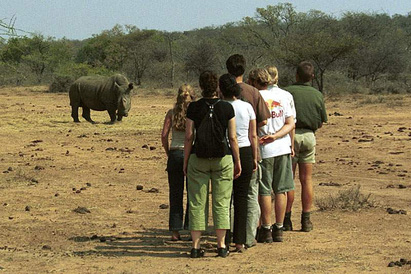

 The Accurate Reloading Forums
The Accurate Reloading Forums  THE ACCURATE RELOADING.COM FORUMS
THE ACCURATE RELOADING.COM FORUMS  Nature, Animals, Space And The Sea
Nature, Animals, Space And The Sea  Game Management
Game Management  These little bumps, new antlers coming out?
These little bumps, new antlers coming out?Go  | New  | Find  | Notify  | Tools  | Reply  |  |
| one of us |
[IMG][url="http://www.hunt101.com/?p=267421&c=500&z=1"]  [/url][/IMG] [/url][/IMG]I don't know if they're newly forming or left over from last year? Plinker aim small, hit small | ||
|
one of us |
| |||
|
| One of Us |
Plinker603 those are newly forming antlers. Notice that he still has that baby or doe look to him. When he gets a set, his brow will thicken. | |||
|
| One of Us |
I agree with KentuckyMountainMan that it looks like a yearling buck, sometimes called a "button buck". I would think that they are newly formed and probably will look the same (a little point might protrude) until he sprouts his first set of antlers, I might be wrong though. Thanks for the picture-Ron | |||
|
| one of us |
Yeah, i know it's a young deer. All the pictures i get are of young deer. Just didn't know if it was new buttons or old buttons. I've been feeding the deer grain all winter and have mineral supplements out for them. Helping them through the winter, there was hardly any acorns last fall. They're leaving the feed alone now, though. Everything is greening up and they like natural browse the best. I can't wait till the fawns are born to get some pictures! Plinker aim small, hit small | |||
|
| one of us |
Clearly a young buck. Our buck fawns all have knots on their heads--no bare antler protruding through, although should they be an early born fawn, they might have bare antlers like in the photo. I got a funny pic the last trip to the ranch. Saw two deer at the end of the road (200 yds+) and put the glasses on them and saw a doe and fawn. The fawn was trying to nurse, and the doe kept kicking him away. After a couple of kicks, he moved around behind her and sniffed her behind, then mounted her--and only about half her size. This happened several times and as I watched, I saw antlers coming through the cactus on her downwind side. I grabbed the rifle and got ready, then a young 4-pt popped out of the cactus and I watched him chase her around the blind for the next 3 hours. Guess the doe/fawn episode would confirm an "Oedipus Complex" among whitetail? An old pilot, not a bold pilot, aka "the pig murdering fool" | |||
|
| new member |
This sure looks like the antlers of a male that may not have had the correct compliment of hormones for antler growth. It takes more than testosterone - a whole host of different hormones - to pull off a normal antler cycle. If this was a yearling male and not a calf then it is probably just one of those anomolies in the antler world. My new book has a whole chapter on antler developement and abnormalities incorporating the latest research. It is simply the best discussion of antlers in print. JIM www.deernut.com | |||
|
| one of us |
I spend hours watching the bucks, does, and fawns on the ranch where I hunt. About 40-50% of the fawns are young bucks--and they all have knots on their heads. By January/February the older buck fawns born early have bare, bony antlers--if you call a 3/4" "bump" an antler. An old pilot, not a bold pilot, aka "the pig murdering fool" | |||
|
| Powered by Social Strata |
| Please Wait. Your request is being processed... |
|
 The Accurate Reloading Forums
The Accurate Reloading Forums  THE ACCURATE RELOADING.COM FORUMS
THE ACCURATE RELOADING.COM FORUMS  Nature, Animals, Space And The Sea
Nature, Animals, Space And The Sea  Game Management
Game Management  These little bumps, new antlers coming out?
These little bumps, new antlers coming out?

Visit our on-line store for AR Memorabilia

